Return to Rick O'Kelley - Return to Blytheville Air Force Base
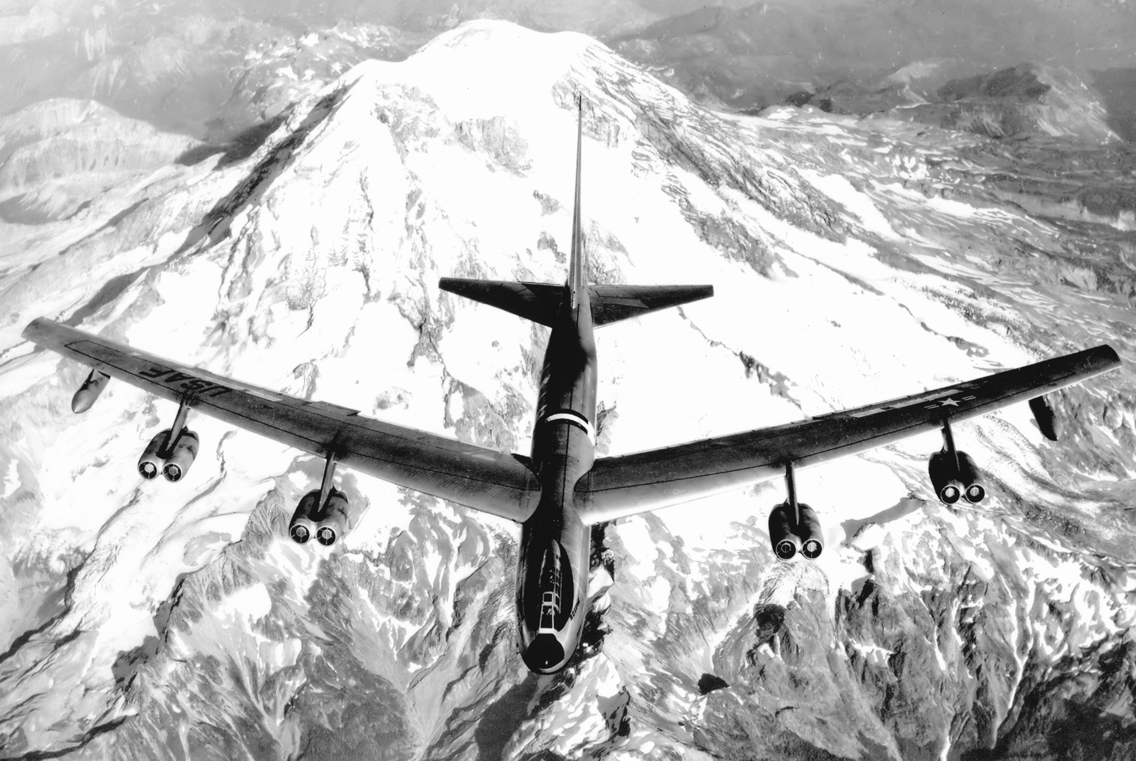
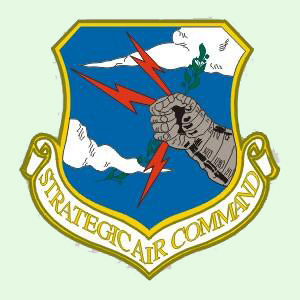 |
| # of B-52s MFG | ||
| XB-52 | Seattle 1952 | 1 |
| YB-52 | Seattle 4/15/1952 | 1 |
| B-52A | Seattle | 3 |
| B-52B | Seattle | 23 |
| RB-52B | Seattle | 27 |
| B-52C | Seattle | 35 |
| B52D | Seattle & Wichita | 170 |
| B-52E | Seattle & Wichita | 100 |
| B-52F | Seattle & Wichita | 89 |
| B-52G | Wichita | 193 |
| B-52H | Wichita - June 22 1962* | 102 |
| Total | 774 | |
 The
first B-52 Stratofortress to fly was the Boeing YB-52 when April 15
1952 just a few weeks before my birth it rolled out of the
Boeing Aircraft factory in Seattle Washington. The above photo
depicts the YB-52 flying over
Mt Rainier
on this first historic flight. The XB-52 was to fly that
day but didn't because of a hydraulic problem so it's back up
twin, the YB-52 took the center stage and became the first B-52
to grab the wind beneath its wings. Both jets had the same in line
seating arrangement as the six engine
B-47
shown in the photo to the right. The
B-47
was the USAF's sole all jet
SAC bomber in 1952 and the copilot in the
B-47 set behind the
pilot but this was changed to side by side seating at the
direction of SAC Commander
General Curtis Lamay. The B-52 fixed some of the
things that bomber pilots didn't like about the
B-47 which was the
The
first B-52 Stratofortress to fly was the Boeing YB-52 when April 15
1952 just a few weeks before my birth it rolled out of the
Boeing Aircraft factory in Seattle Washington. The above photo
depicts the YB-52 flying over
Mt Rainier
on this first historic flight. The XB-52 was to fly that
day but didn't because of a hydraulic problem so it's back up
twin, the YB-52 took the center stage and became the first B-52
to grab the wind beneath its wings. Both jets had the same in line
seating arrangement as the six engine
B-47
shown in the photo to the right. The
B-47
was the USAF's sole all jet
SAC bomber in 1952 and the copilot in the
B-47 set behind the
pilot but this was changed to side by side seating at the
direction of SAC Commander
General Curtis Lamay. The B-52 fixed some of the
things that bomber pilots didn't like about the
B-47 which was the
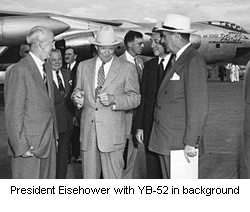 first
all jet powered USAF bomber and was the
Strategic Air Command's main bomber in 1952
but mostly the B-52 could travel at the same speed as the B-47
but carry twice the payload. President
Dwight D Eisehower was so impressed with the YB-52 aircraft that
over the alarm and objections of his
US
Secret Service detail, the President boarded the aircraft to see
the inside first hand. I am sure for this old WWII Allied
Supreme Commander that he was thrilled at the experience.
One B-52 could have reduced WWII Germany to rubble and if
England had fell to Germany it is very possible the B-52 would
have come sooner as America built the
B-36 Peacemaker to fly from bases in America to Europe so
the pressure to develop a jet bomber of the B-52 class would
have been enormous but when England didn't fall, the B-36 was
put on the back burner and all efforts went to the building of
the
B-17 Flying Fortress,
B-24 Liberator, and the
B-29 Superfortress.
first
all jet powered USAF bomber and was the
Strategic Air Command's main bomber in 1952
but mostly the B-52 could travel at the same speed as the B-47
but carry twice the payload. President
Dwight D Eisehower was so impressed with the YB-52 aircraft that
over the alarm and objections of his
US
Secret Service detail, the President boarded the aircraft to see
the inside first hand. I am sure for this old WWII Allied
Supreme Commander that he was thrilled at the experience.
One B-52 could have reduced WWII Germany to rubble and if
England had fell to Germany it is very possible the B-52 would
have come sooner as America built the
B-36 Peacemaker to fly from bases in America to Europe so
the pressure to develop a jet bomber of the B-52 class would
have been enormous but when England didn't fall, the B-36 was
put on the back burner and all efforts went to the building of
the
B-17 Flying Fortress,
B-24 Liberator, and the
B-29 Superfortress. Born in the Cold War, the B-52 is "the wise grandfather" whose usefulness never seems to wane. Between April 15 1952 the date of the first B-52 to fly and June 22 1962 the day the last B-52 was manufactured, it was built as an A, B, C, D, E, F, G, and lastly an H model. Today's only the B-52H remains in active military service and it is much different than it was when it rolled out of the Wichita Kansas factory more than fifty years ago. It still has much of its original air frame but the continued upgrades keeps it modern, capable, and deadly. Some of the older models are on static displays around the world, a few still remain in "moth ball" at Davis-Monthan AFB in the desert in Tucson Arizona. Many B-52s, mostly the G models like those assigned to Blytheville AFB were destroyed as a condition of the Start treaties with the former Soviet Union. We didn't just closed bases in the 1990s, we also destroyed many of war machines that were assigned to these former bases.
As a child growing up in the 50s and 60s in western Arkansas during the "Cold War", many lazy summer days I laid in my yard gazing up at the long contrails painting the blue clear skies not knowing that many of these contrails were created by the SAC B-52s on their training missions and flying alert missions always ready to respond on a moments notice. It would be in 1972 when I became a member of the US Air Force and was assigned to SAC that I would come face to face with this mighty warrior.
I was stationed at Blytheville Air Force Base July 1972. We had only B-52G and KC-135 Tankers assigned and in the below photo one can see our B-52s armed with nuclear weapons and our KC-135 tankers on alert always ready to launch but when I arrived July 1972 our B-52s were all stationed in
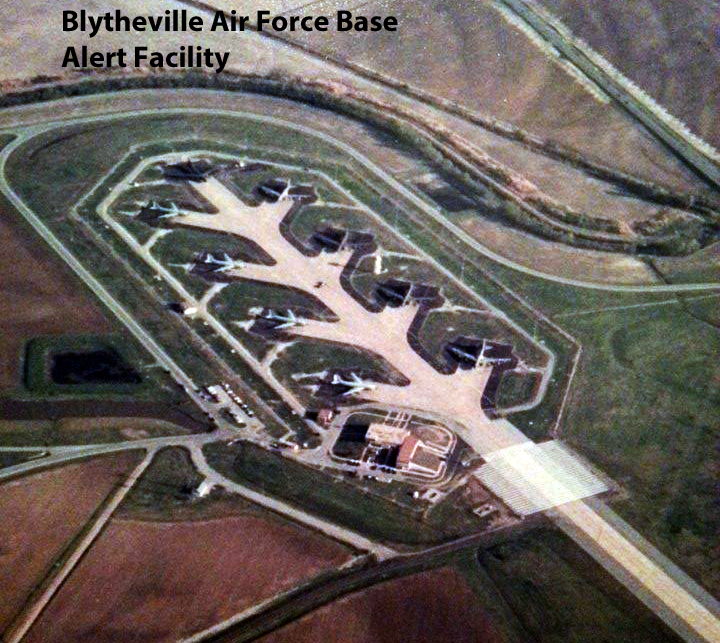 Guam and
Thailand where they were supporting the ground troops still
fighting in Vietnam. It was our B-52s and our air crews
from Blytheville AFB that helped bring the
Vietnam War to an end with the carpet
bombing of North Vietnam and Hanoi during
Operation Linebacker and
Linebacker II. Some of our air
crews from Blytheville AFB
bought the war's end with their lives as
the
memorial at my former base still stands in witness.
I was engaged in serious life and death business and while I
didn't fly in a B-52, working in NORS Control, I was one of five
airmen, one
WAF, and one civilian whose job was to keep those alert
bombers supplied with parts so they could fly when ordered to
war. NORS stood for "Not Operationally Ready Supply" and
it was our job to issue parts for Alert aircraft after hours, on
weekends, and holidays but more importantly if we didn't have the
part then locate the part anywhere in the world and have it flown in so we could be ready
to go to war when ordered to do so. Everyone from the man
who ran the base theater to those who cooked the meals played an
important part in the winning of the
Cold War
and we shared a risk because if war had broke out everyone in and
around my base would have been killed so it is easy today to think
this wasn't a big deal but I remember the time when it was a
very big deal because even before I arrived the
97th Bomb Wing of the Blytheville AFB and its B-52Gs had
established a noble reputation during the
Cuban Missile Crises in 1962 when it played major role and
may have been the contributing factor in preventing Nuclear War
with the Soviet Union.
DEFCON was made famous by the movie War Games and
DEFCON 2 was
declared, the highest it ever during the time of the
Strategic Air Command and was the closest
we ever came to nuclear war. Our bombers were flushed and
took their holding pattern awaiting the Presidents order to "go
to war" and as the crises continued for
more than a day and the air crews became fatigued circling
awaiting their "go to war" orders, replacements
relieved them with
fresh B-52s and crews from Blytheville AFB. Because of their
readiness and the critical role they played during the crises my
unit, the 97th Bomb Wing was awarded a Presidential Citation,
one of the ribbons I wore on my chest was earned by the men of
the 97th Bomb Wing ten years before my service. In 1962
the B-52 had never been used in war, but its service and
reputation was so impressive that it was likely the threat of
the B-52 played an important part in the Soviet's willingness to
negotiate and end the hostilities thus avoiding war so if you
think the ole "BUFF"
is just another old bomber, you might want to rethink that.
The
ole "BUFF"
influenced world peace and saved millions of innocent lives but
1962 wasn't the only time we came near to nuclear war when in
the early morning
October
25 1973
DEFCON 3 was
declared.
I received my Alert phone call in the AM hours Thursday and my
normal 16 hour shift in NORS Control began that
evening at 4PM so since my unit was already a 24x7 hour
operation, our mission was to support the aircraft that were on
alert so every day we were working as if we were on a war alert,
I only had to appear for a unit briefing by my supervisor where we were put on travel
restrictions and ordered not to talk about our activity to
anyone, not even our spouses After the early morning
briefing then I was allowed to return to my home and resume my
normal duty schedule that night. I don't recall how long
DEFCON 3 was maintained but my memory is it wasn't longer
than 24 to 48 hours. This was all due to the growing
tensions in the
Yom Kippur War in the middle east and the concern that the
USSR was going to intervene to aid the Muslim countries. Some Air Force
wives took their children and left the area. Renee' choose to
remain and that wasn't a small deal, the general feeling on base
was this could be the end for us because if the "go to war"
order was given,
Strategic Air Command bases would be the
targets of the first strike weapons of the Soviet Union because
as soon as our Alert aircraft were flushed, our remaining
bombers and tankers would be prepared for the second and third
waves to go to war.
Guam and
Thailand where they were supporting the ground troops still
fighting in Vietnam. It was our B-52s and our air crews
from Blytheville AFB that helped bring the
Vietnam War to an end with the carpet
bombing of North Vietnam and Hanoi during
Operation Linebacker and
Linebacker II. Some of our air
crews from Blytheville AFB
bought the war's end with their lives as
the
memorial at my former base still stands in witness.
I was engaged in serious life and death business and while I
didn't fly in a B-52, working in NORS Control, I was one of five
airmen, one
WAF, and one civilian whose job was to keep those alert
bombers supplied with parts so they could fly when ordered to
war. NORS stood for "Not Operationally Ready Supply" and
it was our job to issue parts for Alert aircraft after hours, on
weekends, and holidays but more importantly if we didn't have the
part then locate the part anywhere in the world and have it flown in so we could be ready
to go to war when ordered to do so. Everyone from the man
who ran the base theater to those who cooked the meals played an
important part in the winning of the
Cold War
and we shared a risk because if war had broke out everyone in and
around my base would have been killed so it is easy today to think
this wasn't a big deal but I remember the time when it was a
very big deal because even before I arrived the
97th Bomb Wing of the Blytheville AFB and its B-52Gs had
established a noble reputation during the
Cuban Missile Crises in 1962 when it played major role and
may have been the contributing factor in preventing Nuclear War
with the Soviet Union.
DEFCON was made famous by the movie War Games and
DEFCON 2 was
declared, the highest it ever during the time of the
Strategic Air Command and was the closest
we ever came to nuclear war. Our bombers were flushed and
took their holding pattern awaiting the Presidents order to "go
to war" and as the crises continued for
more than a day and the air crews became fatigued circling
awaiting their "go to war" orders, replacements
relieved them with
fresh B-52s and crews from Blytheville AFB. Because of their
readiness and the critical role they played during the crises my
unit, the 97th Bomb Wing was awarded a Presidential Citation,
one of the ribbons I wore on my chest was earned by the men of
the 97th Bomb Wing ten years before my service. In 1962
the B-52 had never been used in war, but its service and
reputation was so impressive that it was likely the threat of
the B-52 played an important part in the Soviet's willingness to
negotiate and end the hostilities thus avoiding war so if you
think the ole "BUFF"
is just another old bomber, you might want to rethink that.
The
ole "BUFF"
influenced world peace and saved millions of innocent lives but
1962 wasn't the only time we came near to nuclear war when in
the early morning
October
25 1973
DEFCON 3 was
declared.
I received my Alert phone call in the AM hours Thursday and my
normal 16 hour shift in NORS Control began that
evening at 4PM so since my unit was already a 24x7 hour
operation, our mission was to support the aircraft that were on
alert so every day we were working as if we were on a war alert,
I only had to appear for a unit briefing by my supervisor where we were put on travel
restrictions and ordered not to talk about our activity to
anyone, not even our spouses After the early morning
briefing then I was allowed to return to my home and resume my
normal duty schedule that night. I don't recall how long
DEFCON 3 was maintained but my memory is it wasn't longer
than 24 to 48 hours. This was all due to the growing
tensions in the
Yom Kippur War in the middle east and the concern that the
USSR was going to intervene to aid the Muslim countries. Some Air Force
wives took their children and left the area. Renee' choose to
remain and that wasn't a small deal, the general feeling on base
was this could be the end for us because if the "go to war"
order was given,
Strategic Air Command bases would be the
targets of the first strike weapons of the Soviet Union because
as soon as our Alert aircraft were flushed, our remaining
bombers and tankers would be prepared for the second and third
waves to go to war. 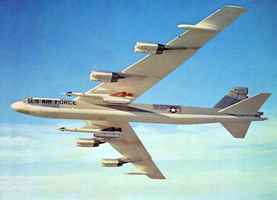 Our Bombers were armed with two
AGM-28 Nuclear Hound Dog Missile and the
Strategic Air Command figured out a way to
use the engines on the two
AGM-28 Nuclear Hound Dog Missile engines to give the B-52
more take off power allowing it to use a shorter runway.
To the right is a photo of B-52G like those assigned ot
Blytheville and you may click on the photo to the right to see a
larger image where you can see the
AGM-28 Nuclear Hound Dog Missile in white between the
engines and the body of the B-52. A
AGM-28 Nuclear Hound Dog Missile hung on each side and which
the bomber would dropped their engines started and ran at full
speed crashing from as high up as 45 thousand feet into their
targets. They could travel about 600 miles from the B-52
reducing the risk to the bomber and its crew. Before the
Vietnam War this was the paint scheme of all B-52s but when they
were converted to do conventional bombing in Vietnam they
received the camo paint job that is seen on Miss Piggy below.
The under belly was white so looking up they would be difficult
to see but the upper body was painted camo so Migs looking down
would find them difficult to see against he jungle.
I never saw the paint scheme to the left, when I arrived on base
all B-52s were camo and some of the D and F models were black.
Our Bombers were armed with two
AGM-28 Nuclear Hound Dog Missile and the
Strategic Air Command figured out a way to
use the engines on the two
AGM-28 Nuclear Hound Dog Missile engines to give the B-52
more take off power allowing it to use a shorter runway.
To the right is a photo of B-52G like those assigned ot
Blytheville and you may click on the photo to the right to see a
larger image where you can see the
AGM-28 Nuclear Hound Dog Missile in white between the
engines and the body of the B-52. A
AGM-28 Nuclear Hound Dog Missile hung on each side and which
the bomber would dropped their engines started and ran at full
speed crashing from as high up as 45 thousand feet into their
targets. They could travel about 600 miles from the B-52
reducing the risk to the bomber and its crew. Before the
Vietnam War this was the paint scheme of all B-52s but when they
were converted to do conventional bombing in Vietnam they
received the camo paint job that is seen on Miss Piggy below.
The under belly was white so looking up they would be difficult
to see but the upper body was painted camo so Migs looking down
would find them difficult to see against he jungle.
I never saw the paint scheme to the left, when I arrived on base
all B-52s were camo and some of the D and F models were black.I discharged from the USAF in
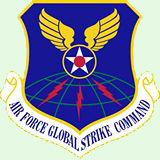 1976. The photo of "Miss
Piggy" was taken at
Fairford Air Base in England in 1980. My
1976. The photo of "Miss
Piggy" was taken at
Fairford Air Base in England in 1980. My
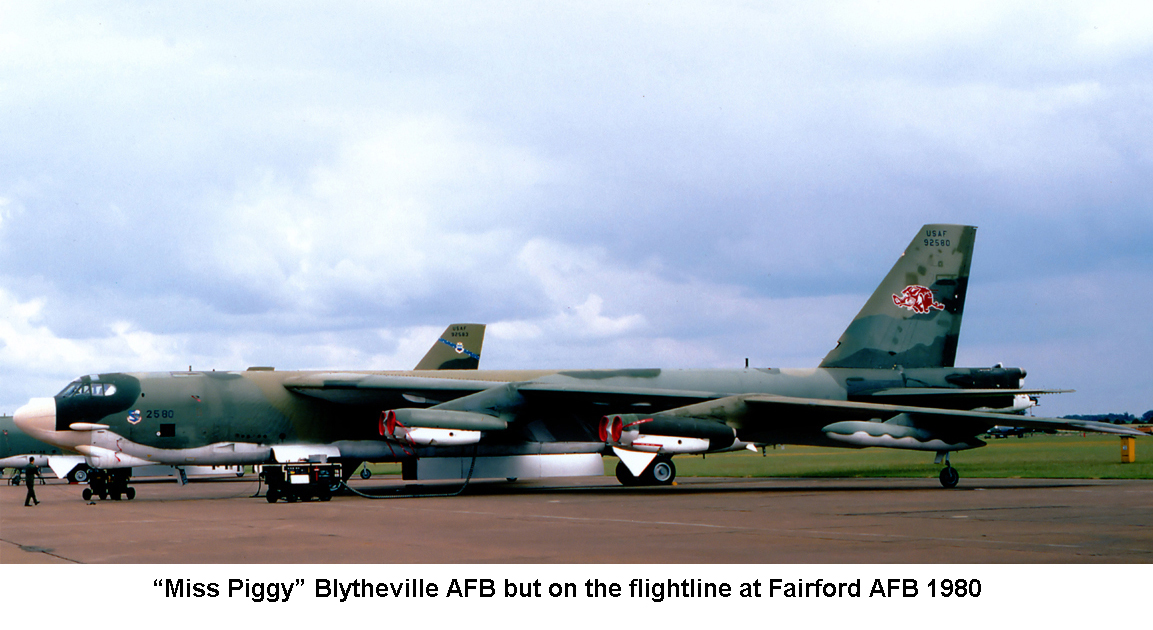 old
base, Blytheville AFB
was renamed
Eaker AFB in 1988 but was
closed in 1992 as part of the base closings. Perhaps the
largest blunder of the George H W Bush administration was the
Strategic Air Command was also deactivated
in 1992 so it wasn't just bases and equipment that were shut
down, major commands that had been active for almost 50 years
were decommissioned signally the end of the Cold War and lulling
our nation into believing we could relax the danger was over.
September 11 2011 awoke America that we will always be in needed
of a first strike rapid response unit like the
Strategic Air Command. The
Global Strike Command which is much smaller
than SAC but just as deadly and operates some former SAC bases where
B-52Hs set on alert to respond to global threats on a moments
notice was created August 7 2009 during President Obama's first
year in office.
old
base, Blytheville AFB
was renamed
Eaker AFB in 1988 but was
closed in 1992 as part of the base closings. Perhaps the
largest blunder of the George H W Bush administration was the
Strategic Air Command was also deactivated
in 1992 so it wasn't just bases and equipment that were shut
down, major commands that had been active for almost 50 years
were decommissioned signally the end of the Cold War and lulling
our nation into believing we could relax the danger was over.
September 11 2011 awoke America that we will always be in needed
of a first strike rapid response unit like the
Strategic Air Command. The
Global Strike Command which is much smaller
than SAC but just as deadly and operates some former SAC bases where
B-52Hs set on alert to respond to global threats on a moments
notice was created August 7 2009 during President Obama's first
year in office. 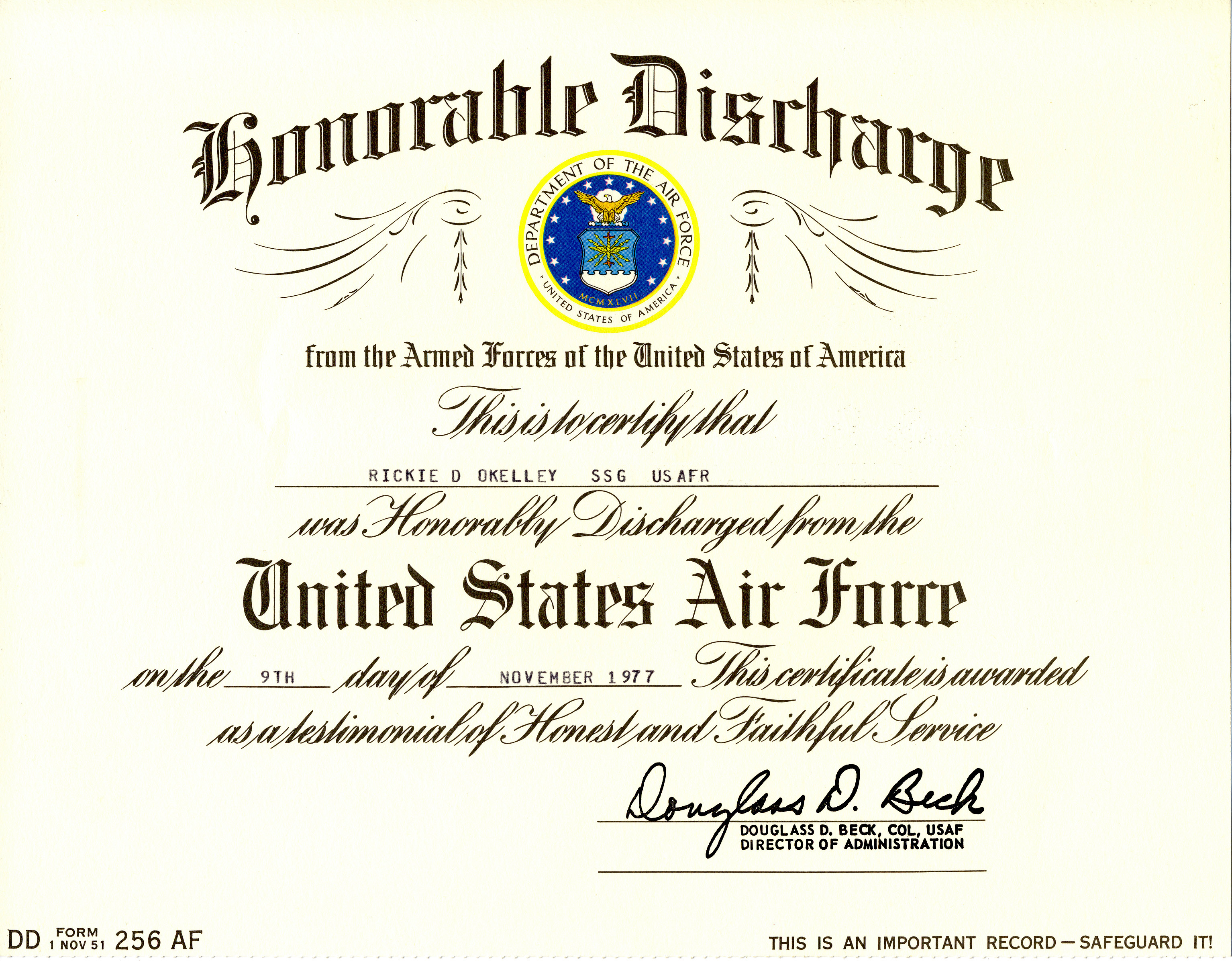
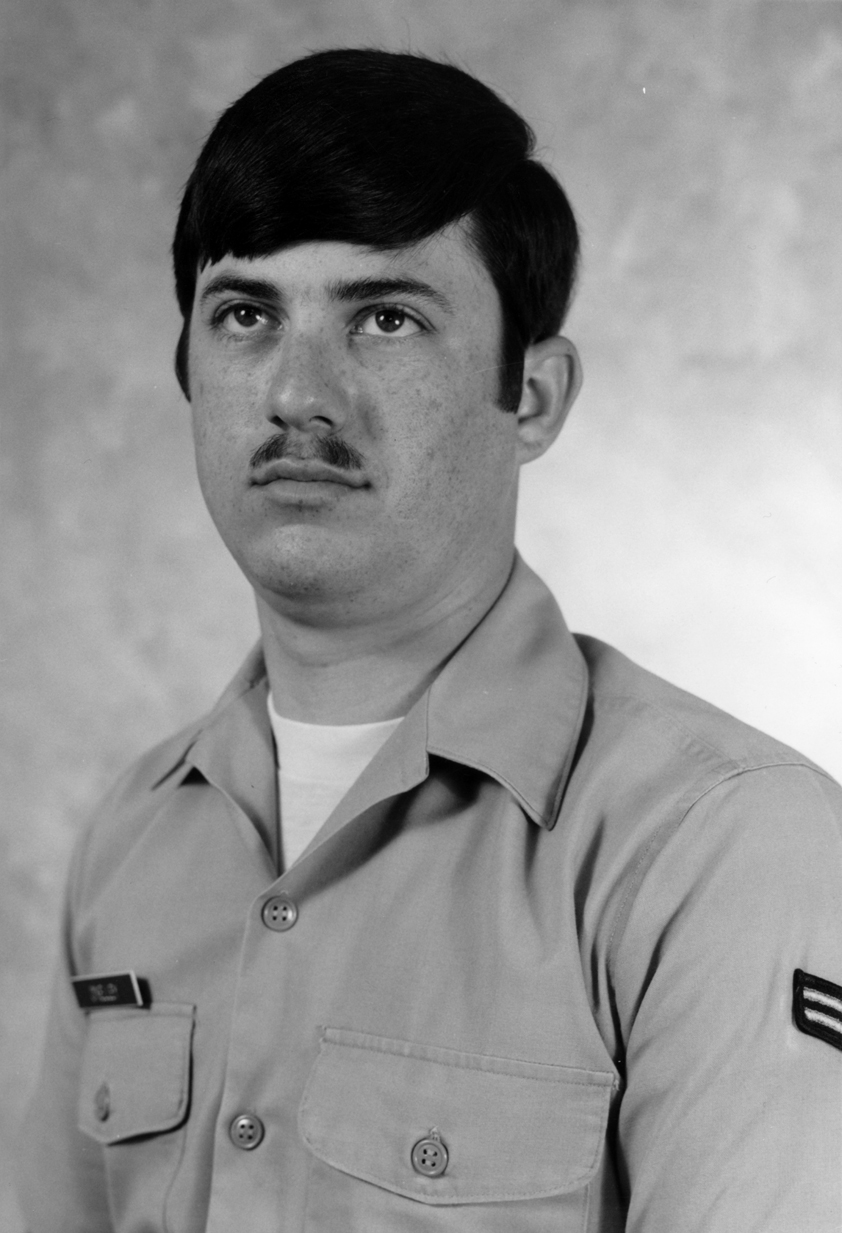 While I didn't
volunteer to fight in combat in Vietnam nor did the USAF send
me into the war zone, the psychology of that war had far
reaching impact upon my life and those around me. It isn't
something one can explain and those who didn't experience it
can't understand it, you would have to have been there and done
that to know the impact that war had on my generation of young
men who were subjected to the military draft. I spent four
years of the prime of my life serving my country during the
"Cold War" and in the support of the nuclear mission of the
B-52. I am the only one of my family to have done so and
my service and my mission was the primary purpose of those four
years. I had no choice, my US Air Force service to
Strategic Air Command came first, it came before my life and
before my marriage because during those four years I was committed by
law to the US Air Force, they owned me as surely as a master
owned his slave and my discharge gives testament that I
fulfilled my commitment and duties as it says "This certificate
is awarded as a testimonial of Honest and Faithful Service".
I took my commitment and duties very seriously and I backed them
up with my life, I had to, it was serve or go to federal prision
so I had a greater bond with the B-52 than anyone or anything on
this earth. I had a greater bond, duty, and responsibility
during those four years to the B-52 than to my wife or my mother
as I always had to serve the USAF while they were free to do as
they wished and I doubt my wife or my mother every understood or
accepted this. They have nothing to compare to know what
my life was like to have no choice in the matter. I wasn't
a free person like they were; 24 hours a day, 7 days a week for
four years I was a member of the USAF and told where to go, told
what to do, and forced to submit to any medical examination
required, unlike them, I had no rights to say "no". It
didn't matter if I was having a bad day, if I wasn't feeling
well, I had to be on duty or in the hospital and I could only
take off when I was on authorized leave, there were no
exceptions. This wasn't an ordinary job that most people
can relate to because I couldn't call in sick because I was sad and
having a crappy day. For most people their job isn't more
important their their life but a military person must give our
life to accomplish our mission. My entire purpose during the almost
four years of my life that I was assigned to the
Strategic Air Command was to ensure that
the B-52s and KC-135s assigned to my base and setting on the
alert pad had the critical parts they needed to do their mission
and while my military service may not sound desirable to most
people, I temper my memory with the sure and certain knowledge
that in return for my honorable service the USAF was good to me. My service opened doors that
were previously closed to me, it forced me to make independent
and sometimes risky choices that both my wife and my mother may
have desired me to take the safer choices.
My USAF service made a man out of me who could stand on his own
two feet and do more than I could before I entered service, do
more than the average person.
The confidence learned during Basic Training was critical to my
success and accomplishments in my law enforcement career, my
photography career, and my Internet business. My Air Force
confidence gave me the critical skills to be a father and a
husband and today at the age of 62 I believe I am luckier than
most men and women of my age because I can look back to that
time and accept the pride because I did something very important
and meaningful with my life. I didn't do like most
ordinary people and just have children and work at a common and
ordinary jobs. I am a USAF Veteran, a Cold War Veteran, a
SAC Veteran, a former licensed Private
Investigator, a retired Deputy Sheriff who commanded a major
criminal investigation division and I owned and operated two
successful businesses and these are all very big deals that few
people can truthfully say about themselves and I owe all these
opportunities to the confidence given to me by my USAF Military
Training and Service. What a great way to enter my
retirement years and it contributes to my pride to know that the
ole B-52 that I once supported is still out there kicking and
making a different and likely will be long after I am gone.
While I didn't
volunteer to fight in combat in Vietnam nor did the USAF send
me into the war zone, the psychology of that war had far
reaching impact upon my life and those around me. It isn't
something one can explain and those who didn't experience it
can't understand it, you would have to have been there and done
that to know the impact that war had on my generation of young
men who were subjected to the military draft. I spent four
years of the prime of my life serving my country during the
"Cold War" and in the support of the nuclear mission of the
B-52. I am the only one of my family to have done so and
my service and my mission was the primary purpose of those four
years. I had no choice, my US Air Force service to
Strategic Air Command came first, it came before my life and
before my marriage because during those four years I was committed by
law to the US Air Force, they owned me as surely as a master
owned his slave and my discharge gives testament that I
fulfilled my commitment and duties as it says "This certificate
is awarded as a testimonial of Honest and Faithful Service".
I took my commitment and duties very seriously and I backed them
up with my life, I had to, it was serve or go to federal prision
so I had a greater bond with the B-52 than anyone or anything on
this earth. I had a greater bond, duty, and responsibility
during those four years to the B-52 than to my wife or my mother
as I always had to serve the USAF while they were free to do as
they wished and I doubt my wife or my mother every understood or
accepted this. They have nothing to compare to know what
my life was like to have no choice in the matter. I wasn't
a free person like they were; 24 hours a day, 7 days a week for
four years I was a member of the USAF and told where to go, told
what to do, and forced to submit to any medical examination
required, unlike them, I had no rights to say "no". It
didn't matter if I was having a bad day, if I wasn't feeling
well, I had to be on duty or in the hospital and I could only
take off when I was on authorized leave, there were no
exceptions. This wasn't an ordinary job that most people
can relate to because I couldn't call in sick because I was sad and
having a crappy day. For most people their job isn't more
important their their life but a military person must give our
life to accomplish our mission. My entire purpose during the almost
four years of my life that I was assigned to the
Strategic Air Command was to ensure that
the B-52s and KC-135s assigned to my base and setting on the
alert pad had the critical parts they needed to do their mission
and while my military service may not sound desirable to most
people, I temper my memory with the sure and certain knowledge
that in return for my honorable service the USAF was good to me. My service opened doors that
were previously closed to me, it forced me to make independent
and sometimes risky choices that both my wife and my mother may
have desired me to take the safer choices.
My USAF service made a man out of me who could stand on his own
two feet and do more than I could before I entered service, do
more than the average person.
The confidence learned during Basic Training was critical to my
success and accomplishments in my law enforcement career, my
photography career, and my Internet business. My Air Force
confidence gave me the critical skills to be a father and a
husband and today at the age of 62 I believe I am luckier than
most men and women of my age because I can look back to that
time and accept the pride because I did something very important
and meaningful with my life. I didn't do like most
ordinary people and just have children and work at a common and
ordinary jobs. I am a USAF Veteran, a Cold War Veteran, a
SAC Veteran, a former licensed Private
Investigator, a retired Deputy Sheriff who commanded a major
criminal investigation division and I owned and operated two
successful businesses and these are all very big deals that few
people can truthfully say about themselves and I owe all these
opportunities to the confidence given to me by my USAF Military
Training and Service. What a great way to enter my
retirement years and it contributes to my pride to know that the
ole B-52 that I once supported is still out there kicking and
making a different and likely will be long after I am gone.But when I drove away from Blytheville Air Force Base Feb 1 1976 the B-52 was considered to be an aging bomber that needed to be replaced with the supersonic North American Rockwell International B-1 Lancer bomber. The Air Force had used the B-58 Huster and was using the newer FB -111 Aardvark to deliver smaller bomb loads because both could exceed the speed of sound but these medium bombers were not replacements for the long range B-52 heavy bomber that the Air Force depended upon so approval to was given under President Ford then canceled by President Carter in the late 1070s then approval was restored in the 1980s during the Reagan years and the Air Force received 104 B-1 Lancer bombers but the B-52 didn't disappear as some thought. Today it seems ironic that the older B-52 is scheduled to continue in service until 2040 while the newer B-1 is expected to retire in 2030 and this came about because the war planners changed their thinking from large fast expensive supersonic bombers to using the resources they already had with the near supersonic B-52 allowing the Air Force to position supersonic weapons such as the cruise missile anywhere in the world. Some of these missiles are said to travel 5x the speed of sound which is many times faster than the fastest bomber making them almost impossible to shoot down.
Service in the Strategic Air Command was so serious that a 1955 movie titled "Strategic Air Command" staring Jimmy Stewart was dedicated to those of us who served in the Strategic Air Command. It is recognition of the importance of my service and demonstrates some of the difficulties SAC had in keeping personnel as even in my time SAC airmen would try to transfer to TAC or MAC to avoid some of the pressures and demands that they experienced serving in SAC. If war broke out, my wife could pack up her stuff and flee and go far away to some place of safety and have a real chance for survival. My parents and brothers, and all of Renee's family could go anywhere they wished to seek shelter and have a chance of survival but the duties of everyone assigned to Strategic Air Command required that we remain at our base and our posts and face what in that time was surely death by a Soviet Nuclear Missile because our B-52s and KC-135s on alert were only the first strike force, the additional aircraft that set on our flight line would be readied for war as soon as our alert aircraft flew away so we were very much at risk from the first strike weapons of the Soviet Union that would be in route to our base to wipe out our ability to continue to make war. It is likely that the Strategic Air Command and its B-52 is all that prevented nuclear war from happening during most of the Cold War, that while I was one of many who helped keep these old warriors flying, these old B-52 warriors protected us all from sudden death. They continue to protect us today. The next time you walk or drive by an old B-52 setting at static display, show it some respect because you might be not be alive today if not for that old war bird and the veterans, the men and women who served in the Strategic Air Command. "Peace is our Profession" was our motto and I believe history records that the threat presented by our USAF B-52s kept the peace.
* The last B-52H rolled out of Boeing Aircraft Wichita Kansas factory June 22 1962 and that aircraft remains in service at Minot AFB North Dakota. Source: "B-52 Stratofortress: The Complete History of the World's Longest Serving and Best Known Bomber" by Bill Yenne